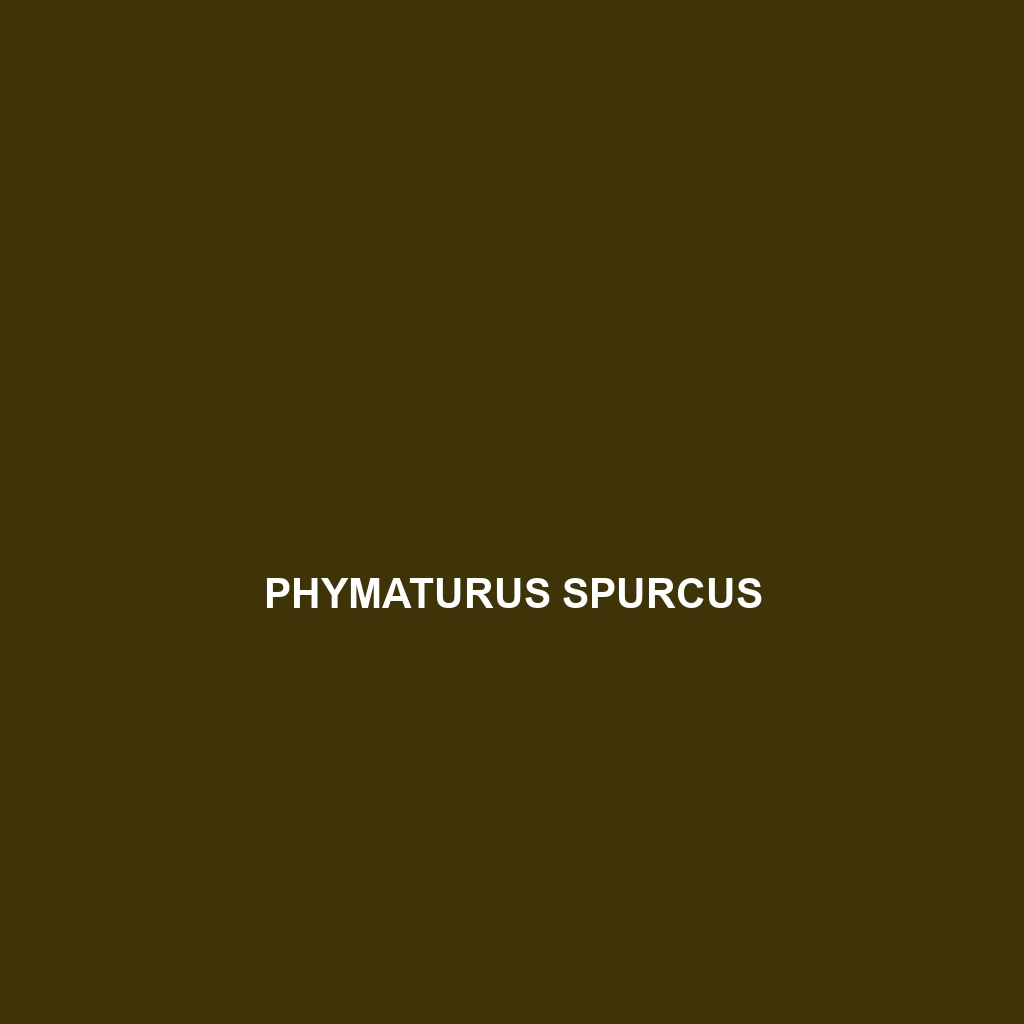Common Name
Phymaturus somuncurensis
Scientific Name
Phymaturus somuncurensis
Habitat
Phymaturus somuncurensis, commonly known as the Somuncurá lizard, is primarily found in the Patagonia region of Argentina. This species favors rocky outcrops and shrubby environments typically seen in the temperate forests and savanah-like areas. These habitats often experience a wide range of temperatures and significant seasonal variations, making them ideal for this resilient species. The geographic distribution of Phymaturus somuncurensis is confined to these mountainous regions, where the lizard can find both sun and shelter among the rocks and shrubs, fostering a perfectly adapted life in such diverse microhabitats.
Physical Characteristics
The Phymaturus somuncurensis typically reaches a length of about 6 to 9 inches (15 to 23 cm). Its body is characterized by a robust, elongated shape, with a distinctively broad head and a short neck. The scales are rough and exhibit a variety of colors ranging from light tan to dark gray, often with intricate patterns that provide excellent camouflage in their rocky habitats. One of the most notable features of this species is its dewlap, which plays a crucial role in territorial displays and mating rituals. The coloration and patterning may vary significantly between individual lizards, which not only serves an aesthetic purpose but also aids in thermoregulation and predator evasion.
Behavior
Phymaturus somuncurensis exhibits primarily diurnal behavior, being most active during the day. They are known for their territoriality, often seen basking on rocks to absorb sunlight, a common behavior in cold-blooded reptiles. Social interactions include displays of aggression toward competitors, particularly during the mating season, which features intricate rituals such as head-bobbing and posturing. Interestingly, these lizards also have unique communication methods, utilizing body language and coloration to convey messages to potential mates or rivals. Their habitat is marked by a relatively sedentary lifestyle, with minimal migration patterns observed within localized ranges.
Diet
The diet of Phymaturus somuncurensis is primarily insectivorous, focusing on a variety of insects such as grasshoppers and beetles. This species has also been known to consume small arthropods and plant matter, showcasing some omnivorous tendencies, particularly during seasons when insects are less available. Feeding activity peaks during warm afternoons, where they forage actively, employing a sit-and-wait strategy before pouncing on unsuspecting prey. Their ability to adapt their feeding habits according to the environment also plays a role in their survival.
Reproduction
During the breeding season, which typically occurs in late spring to early summer, males engage in elaborate courtship displays to attract females. The gestation period lasts for approximately two months, after which the female lays around 4 to 8 eggs in sandy substrates or sheltered areas, ensuring some level of protection from predators. The hatchlings are independent from birth and exhibit juvenile behaviors similar to adults but remain more vulnerable to predation. Parental care is nonexistent in this species, as once the eggs are laid, maternal investment ceases, influencing the survival rates of the offspring.
Conservation Status
As of the latest assessments, Phymaturus somuncurensis is classified as vulnerable due to habitat loss caused by agricultural expansion and urban development in its native region. Conservation efforts are ongoing, focusing on habitat restoration and protection measures to safeguard this species from further decline. Additionally, studies on population dynamics and genetics are crucial in understanding how best to manage its conservation. With proper attention and protection, there is hope for stabilizing the populations of this unique lizard.
Interesting Facts
One particularly intriguing fact about Phymaturus somuncurensis is its adaptability to high altitudes in the Patagonian mountains. This resilience has made it a subject of interest among herpetologists seeking to understand the physiological adaptations of reptiles to extreme conditions. Furthermore, the species is notable for its interesting thermoregulatory behaviors — they will actively seek shaded areas on hot days to avoid overheating, showcasing their evolved strategies to thrive in delicate ecosystems.
Role in Ecosystem
Phymaturus somuncurensis plays a critical role in its ecosystem, serving as both a predator and prey. By consuming a variety of insects, they help maintain the balance of the insect population, which, if unchecked, could lead to other ecological issues. Additionally, they serve as an important food source for larger predators, contributing to the food web dynamics in their habitat. This species can also act as a bioindicator, offering insights into the health of their environment, thus highlighting the interconnectedness of all living organisms within their ecosystem.
